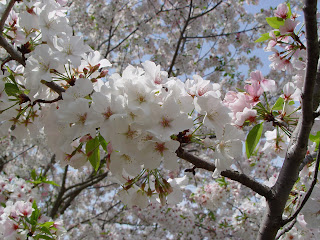Mitochondrial dna comes through
maternal line. If we didn’t have mutations in DNA, then all of our
mitochondrial dna would be identical to that eve. As populations were isolated, we
were exposed to different environmental conditions like food, water, climate and we
mutated. Pigment changes, propensities to accumulating fat. These are some examples:
Kristi Yamaguchi, a famous ice skater, has very a very typical look of someone with an Asian background-mid colored skin, dark hair and eyes, and a thin eye shape.
This is the president of the Columbian soccer federation. I watched him lose a game to Ecuador this summer. He has a very typical South American look about him with darker skin and hair.
These are Mongolian sports players. They have a fuller body shape to provide for colder winters as well as the mid colored skin and more Asian looking face structure.



















